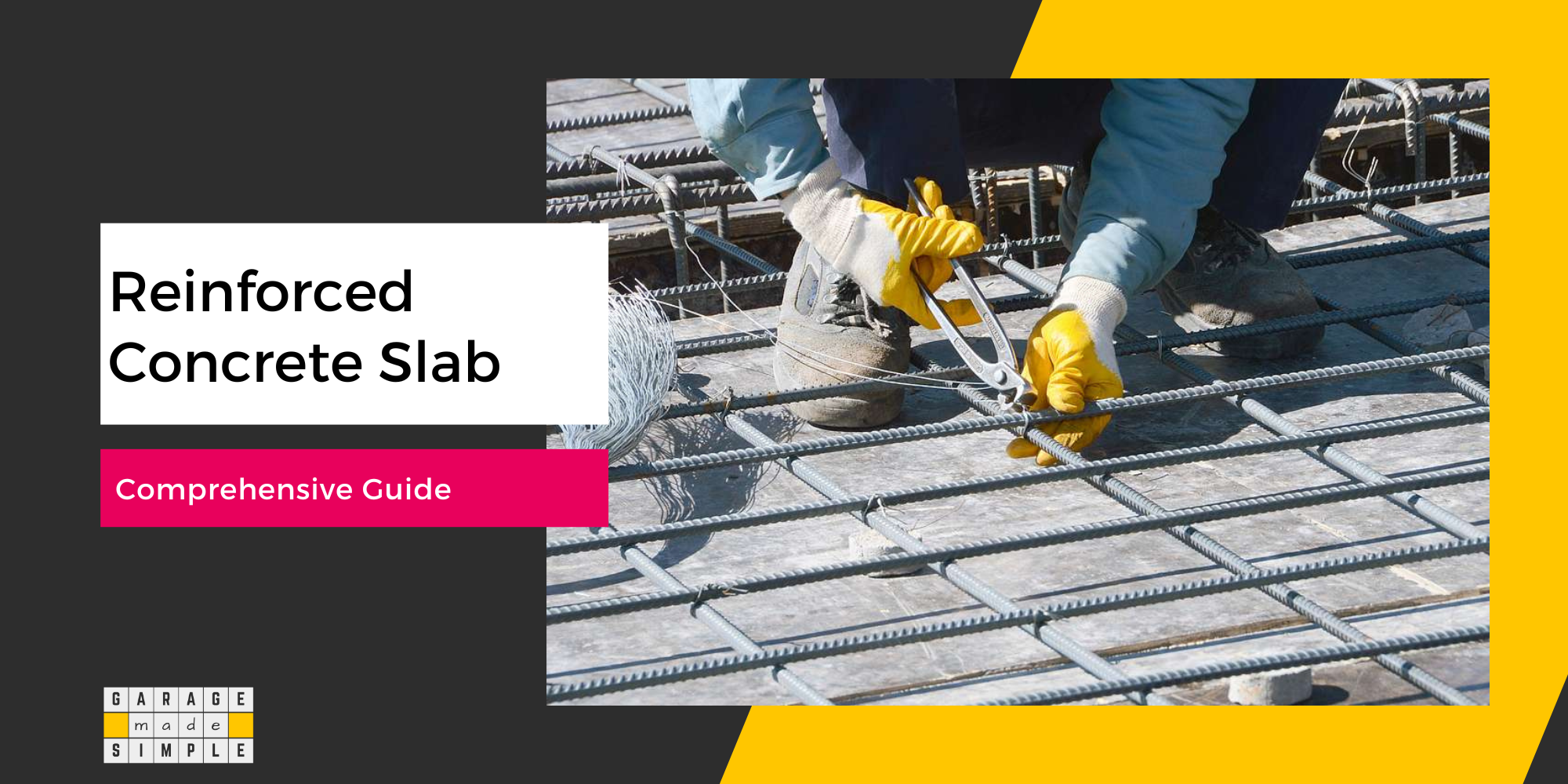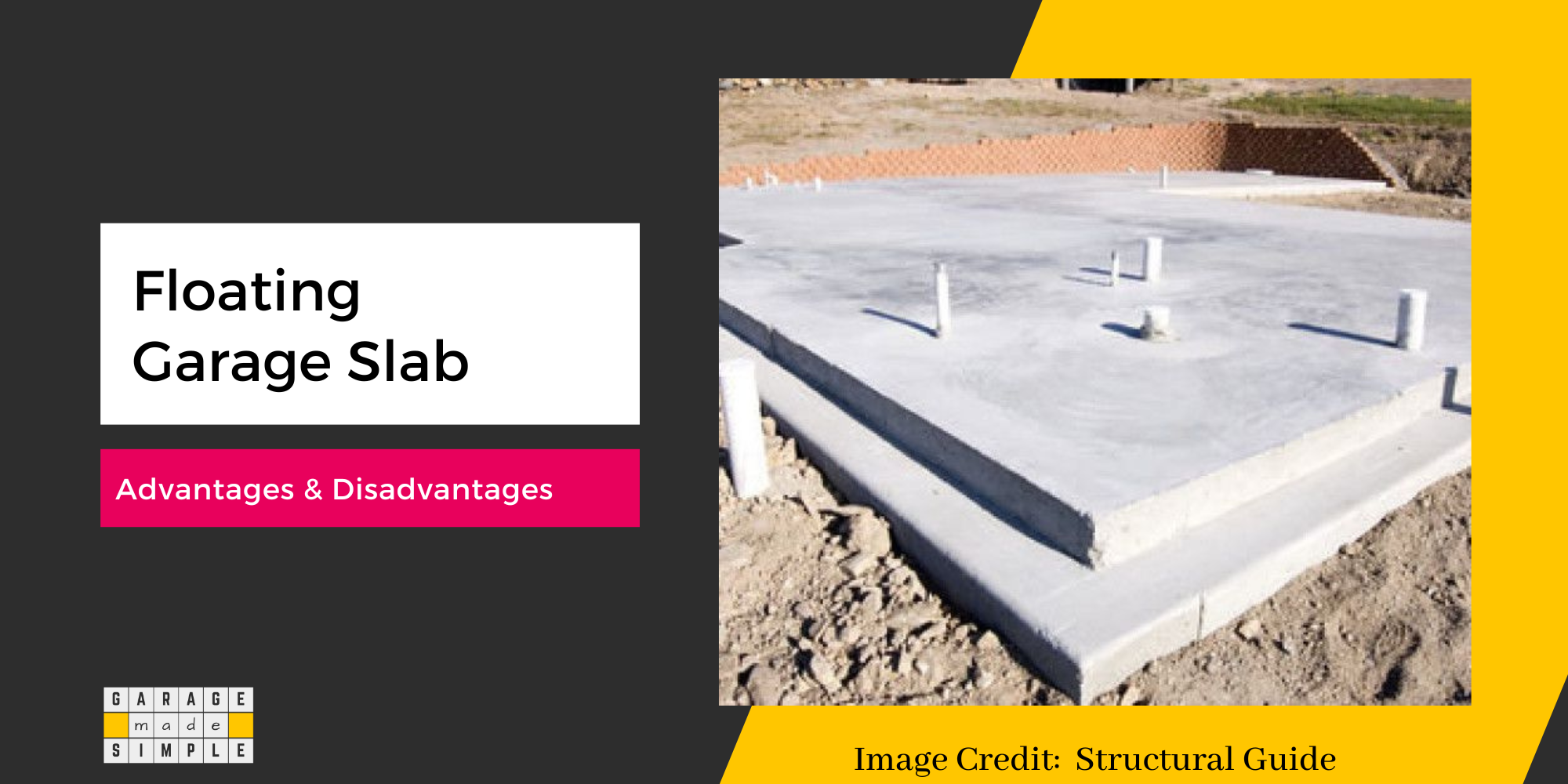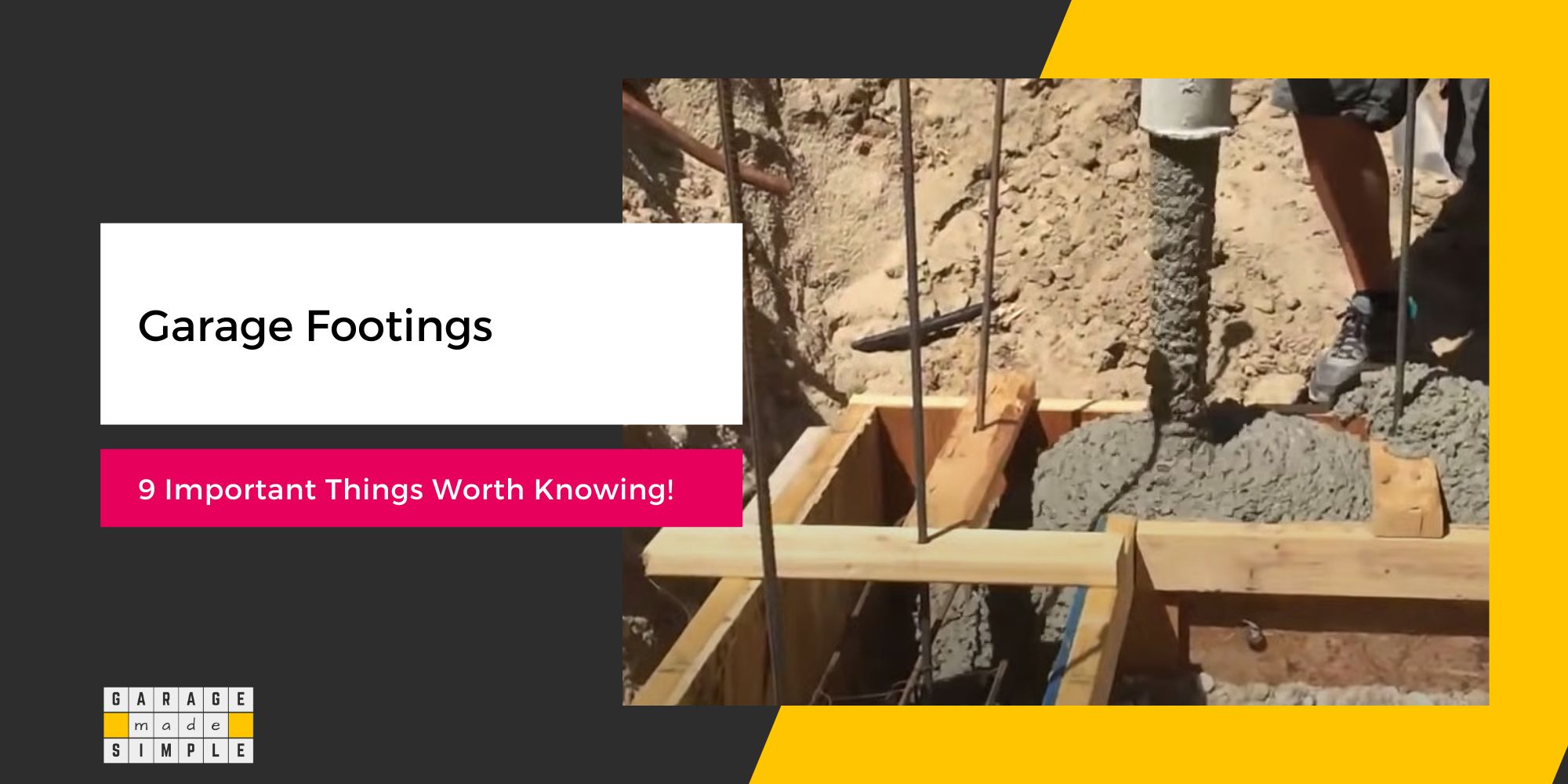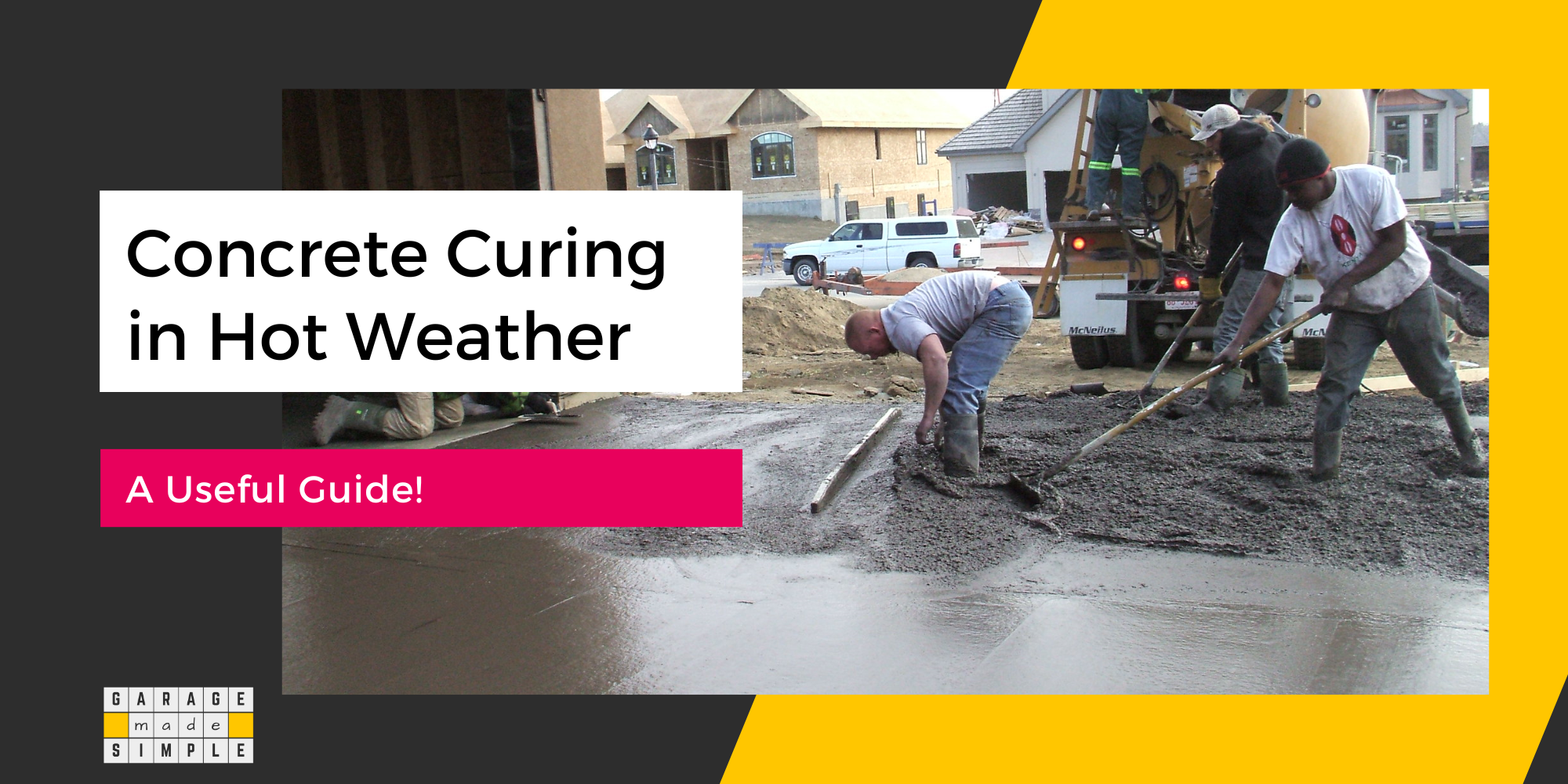Minimum Concrete Thickness for 4 Post Lift: What Is Best Practice?
As an Amazon Associate, I earn from qualifying purchases.
Disclaimer: This article is for information only. IT IS NOT AN INSTALLATION GUIDE. Always use the services of the manufacturer, their authorized agent or a certified professional when considering installation of a 4 post car lift in your garage.
How Thick Should a Concrete Slab Be for a Car Lift?
A car lift in your garage can be a game changer. If you have the height, you can park 2 cars in the space for one. It makes it a lot easier to work on the car while reducing the risk of injury. But can you do it? What is the minimum concrete thickness for installing a 4 post car lift?
Most manufacturers accept that the minimum concrete thickness for a 4 post lift should be 4”. Technically speaking a thickness of 4” is sufficient, but the best practice is to go for a thickness of 6” as it lets you add rebars for reinforcement.
It may seem that the additional load on the garage floor is just the extra weight of the lift assembly (typically 1800 – 2500 lbs.). True, but the dynamics of load distribution changes considerably.
A 4 post lift increases the stress on the concrete slab, as the weight of the vehicle and the lift itself is concentrated on a small area of the slab. The concrete slab, in addition to the compressive stress, is also subjected to tensile and vibratory stresses.
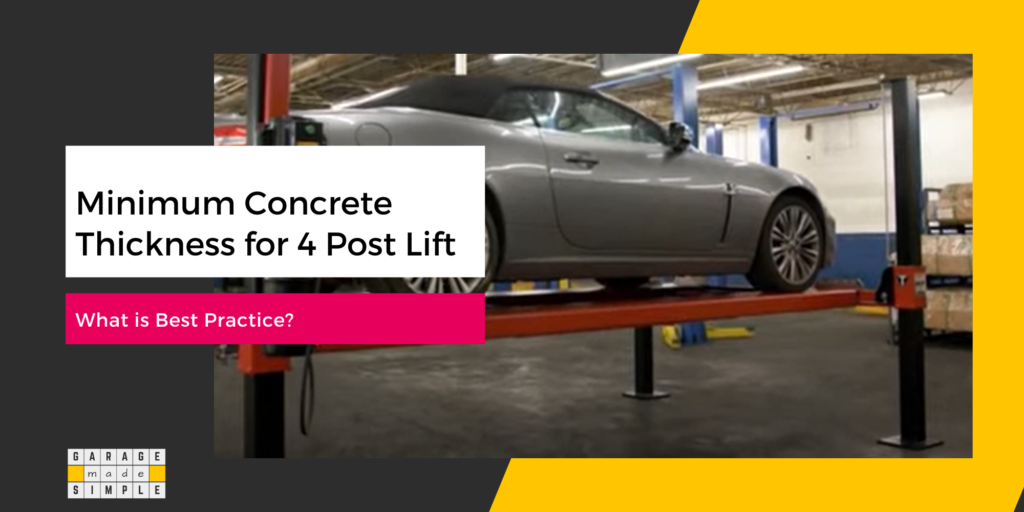
Insufficient concrete slab thickness, lack of rebar reinforcement, use of improper concrete mix and faulty installation can create a potential failure risk. The last thing you want is a 4 post car lift that is unsafe!
Which Is Better: A 2 Post or a 4 Post Car Lift?
Let me start with what a car lift is and why do you need one? The car lift consists of either 2 or 4 posts that are anchored to a concrete slab. The posts can be moved, up or down, using hydraulics.
The car lift is a versatile piece of equipment to lift a vehicle off the ground. This gives you easy access to the undercarriage of the car for maintenance & repairs. You could also use a car lift to increase storage space in your garage.
The advantages of installing a 4 post lift vs a 2 post lift, in a garage, include:
- Stability: This is a no brainer. 4 posts will make the lift a lot more stable than 2 posts. (Chairs & tables have 4 legs, maybe 3 sometimes, but never 2!)
- Safety: A 4 post lift is a lot safer. You do not have to worry that much about exact car positioning. There is almost negligible chance of a hoisted vehicle falling off due to faulty balancing.
- Capacity: 4 post lifts usually have a greater weight capacity than 2 post lifts.
- Versatility: A 4 post lift can be used for a variety of vehicles, from cars and trucks to vans and SUVs.
- Convenience: 4 post lifts allow for easy storage of vehicles, as they can be parked on top of the lift, freeing up space in the garage. It is a lot easier to open and close doors of the car parked below as the posts are at 4 corners.
However, some people prefer to install a 2 post car lift. Their reasons are:
- Cost: 2 post car lifts are cheaper than a 4 post car lift of the same capacity.
- Access: a 2 post car lift gives better access to the undercarriage. If car maintenance & repairs, and not additional storage space, then a 2 post car lift is for you.
What Are Other Load Bearing Capacity Factors?
It is important to note that while thickness of a concrete slab plays an important role in determining the load bearing capacity, it is not the only factor.
The garage floor load bearing capacity also depends on:
- Concrete mix strength
- Curing conditions
- Reinforcement type
Concrete Mix Strength
The concrete mix strength is measured in psi. 2021 International Residential Code (IRC) has a recommended specification of 3000 psi for moderate weathering and 3500 psi for severe weathering.
To find out more check out my article The Best Concrete Mix For Garage Floor: 6 Important Factors!
Curing Conditions
Concrete starts to cure as soon as water is added to the cement-aggregate mix. However, it takes 28 days before it is fully cured and achieved strength close to maximum potential.
Apart from the time, the curing conditions that affect the rate of water evaporation also determine the concrete slab strength.
Reinforcement
Concrete has very high compressive strength but relatively poor tensile strength. The tensile forces on the garage slab increase considerably when a car lift is installed. This requires that the concrete floor should be reinforced with steel rebars.
Reinforcement can be fiber mesh, wire mesh or steel rebars. Rebars have much higher tensile strength but can not be incorporated in a 4” thick concrete slab. Why? Find out in my earlier article Is Rebar For Garage Slab Important? (What You Need To Know!)
Further, you also need to be aware of other factors such as:
- Grade base support
- Grade composition & strength
- Weight distribution
Do’s & Don’ts of 4 Post Car Lift Installation
Here are some general do’s and don’ts when it comes to installing a 4 post lift:
Do’s:
- Install a 4 post car lift on a concrete slab only. Other surfaces such as gravel, packed grade, etc. are not suitable. They will shift under the load.
- Only install a 4 post car lift on a new or sound concrete slab. Old, damaged, cracked or decaying concrete slabs must be inspected and certified by a qualified professional.
- The concrete must meet or exceed the minimum concrete thickness requirement for installing a 4 post car lift.
- All 3/4 inch diameter anchors must be a minimum of 8 inches away from any expansion seams, control joints or other inconsistencies in the concrete.
- Abide by the manufacturer’s instructions and specifications for the specific lift being used.
- Check the weight capacity of the lift and the weight of the vehicle that will be lifted.
- Use the appropriate concrete thickness, mix, and strength for the specific lift and application.
Don’ts:
- Never attempt to install a 4 post car lift yourself. Call in a professional, preferably recommended by the manufacturer or their agent.
- Do not install a 4 post car lift on a concrete slab poured from hand mixed concrete. The consistency and strength may not meet required standards.
- Do not install the 4 post car lift on a slab that is not thick or strong enough to support the weight of the vehicle and the lift.
- Do not install the lift on a slab that is not level or has a poor surface profile.
- Do not exceed the weight capacity of the lift or lift vehicles that are too heavy.
- Do not attempt to modify or repair the lift without consulting the manufacturer or a professional.
Thank you very much for reading the post. I do hope you found it informative and useful.

